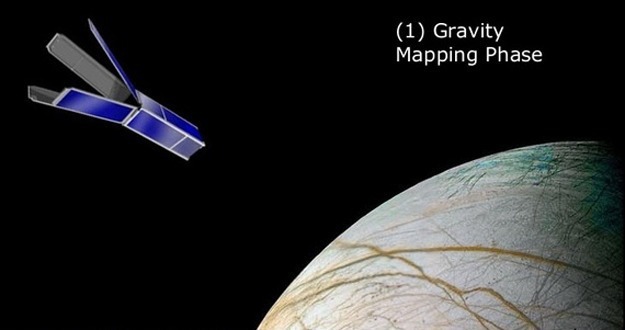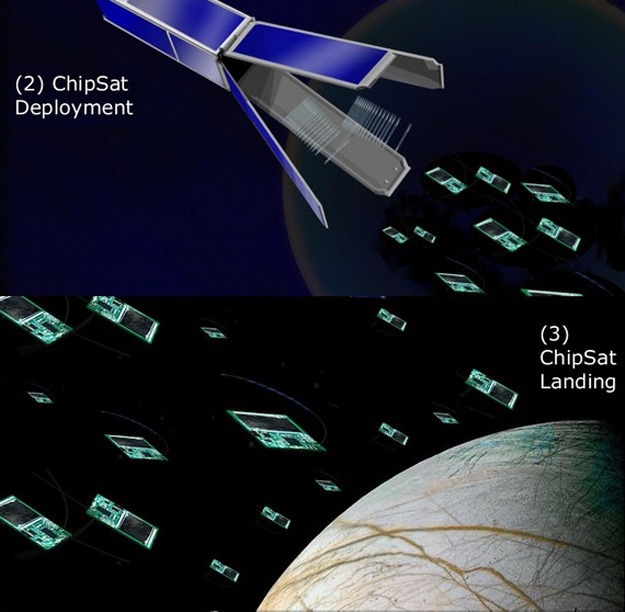They want to send "computer microprobe" to Europe

The NASA Foundation for Financing Innovation Concepts allocated a grant of $ 100,000 to the research company Draper Laboratory, which proposed the technology of sensing remote planets and their satellites using dozens or hundreds of probe chips (ChipSat), each no larger than a coin.
The first goal for testing a new technology could be Europe - the satellite of Jupiter, where liquid water is supposed to be present.
A small spacecraft weighing only a few kilograms probes in two stages. At the first stage, he draws up a gravity map to determine the estimated locations of underground water reservoirs.
')

Then the second stage begins. The satellite chips (ChipSat) are reset to the selected area. They will be able to overcome the thin atmosphere of Europe without damage.

The developers believe that some of the microprobes will be damaged when they fall, but most will function normally. After landing, they begin to work and collect information on the composition of the soil. The collected data is sent back to the mother ship, and it transmits them to Earth.
Source: https://habr.com/ru/post/227249/
All Articles